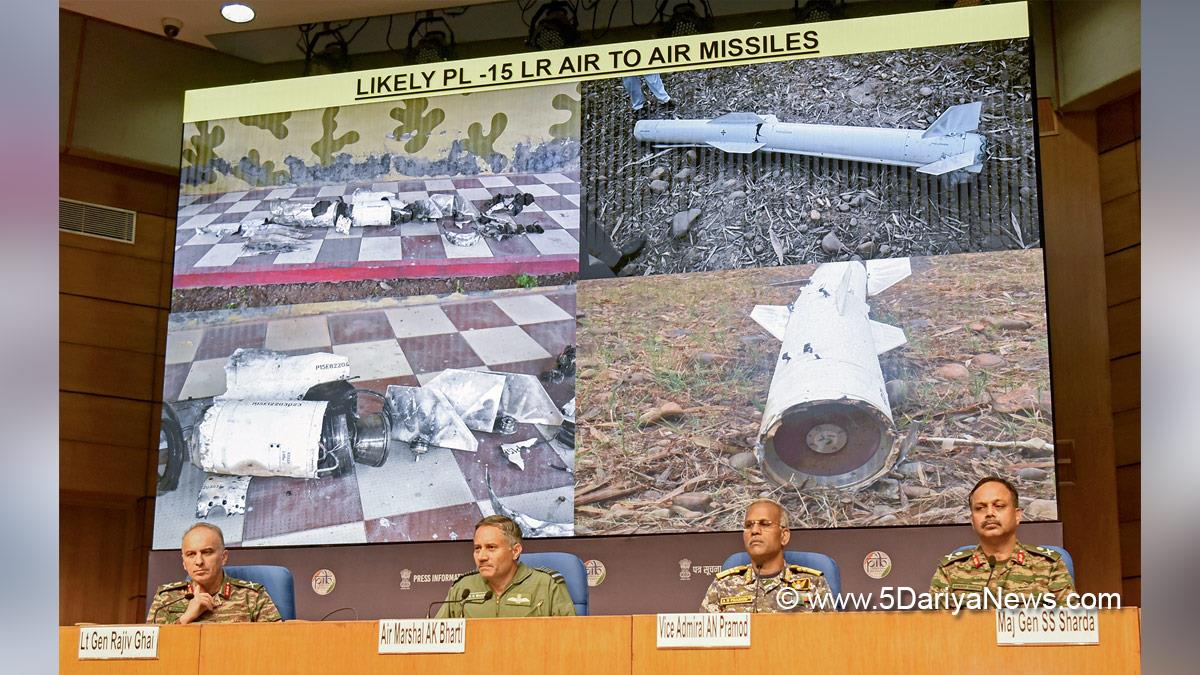Operation Sindoor sends Ramayana-era message to Pakistan

In a powerful and detailed briefing, Air Marshal A.K. Bharti, Director General of Air Operations, provided a comprehensive assessment of India’s robust air defence and offensive capabilities during ‘Operation Sindoor’, launched in response to the April 22 terror attack in Pahalgam.
Describing India’s air defence posture as “firm and impenetrable,” Air Marshal Bharti in a press conference on Monday outlined the coordinated deployment of assets across the Indian Air Force, Army, and Navy. The three services integrated their systems into a multi-layered grid that neutralised a wide array of incoming threats, including drones, missiles, and loitering munitions.
Echoing the ancient wisdom of the Ramayana, India conveyed a powerful message to Pakistan through the calibrated precision strikes of Operation Sindoor: when reason and restraint are ignored, decisive force follows.In a significant moment of the briefing, Bharti invoked a line from the Ramcharitmanas to emphasise the philosophical grounding of India’s response: “Vinay na maanat jaladhi jaḍ, gaye teen din beet. Bole Ram sakop tab, bhay binu hoye na preet. (When humility does not work with the obstinate, and days pass without resolution, then one must act with firmness.
Fear becomes necessary to foster respect and peace.)” The verse, quoting Lord Ram’s decision to act against the intransigence of the ocean god, was cited to reinforce India’s doctrine of calibrated, restrained force in response to continued terror provocation.
“Our battle-proven systems stood the test of time and took them head-on. Another highlight has been the stellar performance of the indigenous air defence system, the Akash system. Putting together and operationalising the potent AD environment has been possible only because of budgetary and policy support from the Government of India in the last decade,” Bharti noted.
India’s air defence grid, as explained by Bharti, included low-level guns and man-portable shoulder-fired systems for point defence. These were supplemented by fighter aircraft and long-range missile systems covering higher altitudes and distances. Several Pakistani drones and UAVs were neutralised using both soft-kill (jamming) and hard-kill (kinetic) counter-UAS technologies, he confirmed.
The IAF successfully countered Chinese-origin PL-15 long-range air-to-air missiles and Turkish-origin Yiha loitering munitions. Visual evidence of quadcopters being shot down by our air defence systems was shown during the briefing.Air Marshal Bharti confirmed India launched targeted strikes across the length and breadth of Pakistan. Two major Pakistani airbases were confirmed as hit:
Nur Khan Air Base: Video footage was shown as proof of precision targeting.Rahimyar Khan Air Base: Satellite imagery confirmed craters on the runway, rendering it temporarily inoperable.The offensive strikes were part of a broader doctrine aimed at deterring further cross-border aggression by targeting key military infrastructure in Pakistan, without escalating the conflict to a full-scale war.
India’s political and military leadership has made it clear that Operation Sindoor was not a one-off action, but a part of a strategic shift in deterrence posture. By demonstrating its ability to conduct precision strikes and deploy a credible multi-domain defence, India has signalled a new normal to adversaries.
Pakistan’s repeated use of drones, missiles, and loitering munitions — many of foreign origin — was met with technologically superior countermeasures, reinforcing India’s defensive edge and indigenous capabilities. The Indian Air Force, as stated by Bharti, remains on high alert, and future violations or provocations “will not go unanswered.”

Comments are closed.